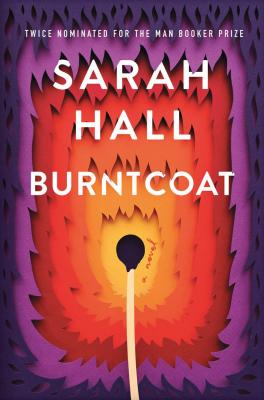Book Review: Burntcoat
Sarah Hall's streamlined sixth novel glows bright, weaving a poetic post-pandemic tale
Do we need fiction about a pandemic? Is that something that will help us navigate our current reality? Or recognize ourselves on the other side? The impetus of the novel Burntcoat by short story writer Sarah Hall is a pandemic (like COVID, but worse), but the story is hardly about that. It gives our protagonist, Edith Harkness, a reason to tell us her story.
The story floats in and out of timelines, the present being many years post-pandemic, which Edith has survived, but where she is suffering a relapse from which she will likely die. She tells us her autobiography which includes her progression as a profitable artist, producing large public installations, and how she came to live at her industrial studio, named Burntcoat. The story includes her childhood with a mother who suffered a brain aneurysm when Edith was young, who has no memory of becoming a mother, and whose personality quirks make for a very unique coming-of-age for Edith.
She recounts her stories of art school, an internship in Japan, and how she happened to return to England when her mother died. It was upon this return that she ended up in quarantine with, ostensibly, a stranger she just began dating and the story progresses as they learn about each other and live and suffer through the pandemic together. At times graphically steamy, the relationship with her live-in pandemic lover, Halit, demonstrates how we show ourselves to others, the role of art in that expression, and ultimately, how death and destruction shape that art.
This novel packs so much in just 300 pages. The writing is poetic and efficient; it feels beautifully edited. There are no wasted words, and the descriptions of Edith's art, her childhood, her lover, and the relationship they discovered together are perfectly presented right in front of the reader. In a way, it gives light to a potential post-pandemic that we can all see as a possible reality: the loss of normalcy, the residual effects, and the unceasing need for artistic expression to cut through all of the pain. I would recommend reading this book in as few sittings as possible to get the true thrust of its fluid timeline and to fully appreciate the way the book feels sculpted, bit by bit, into being.
304 Pages // Custom House/HarperCollins // Psychological Fiction, Dystopian Fiction




